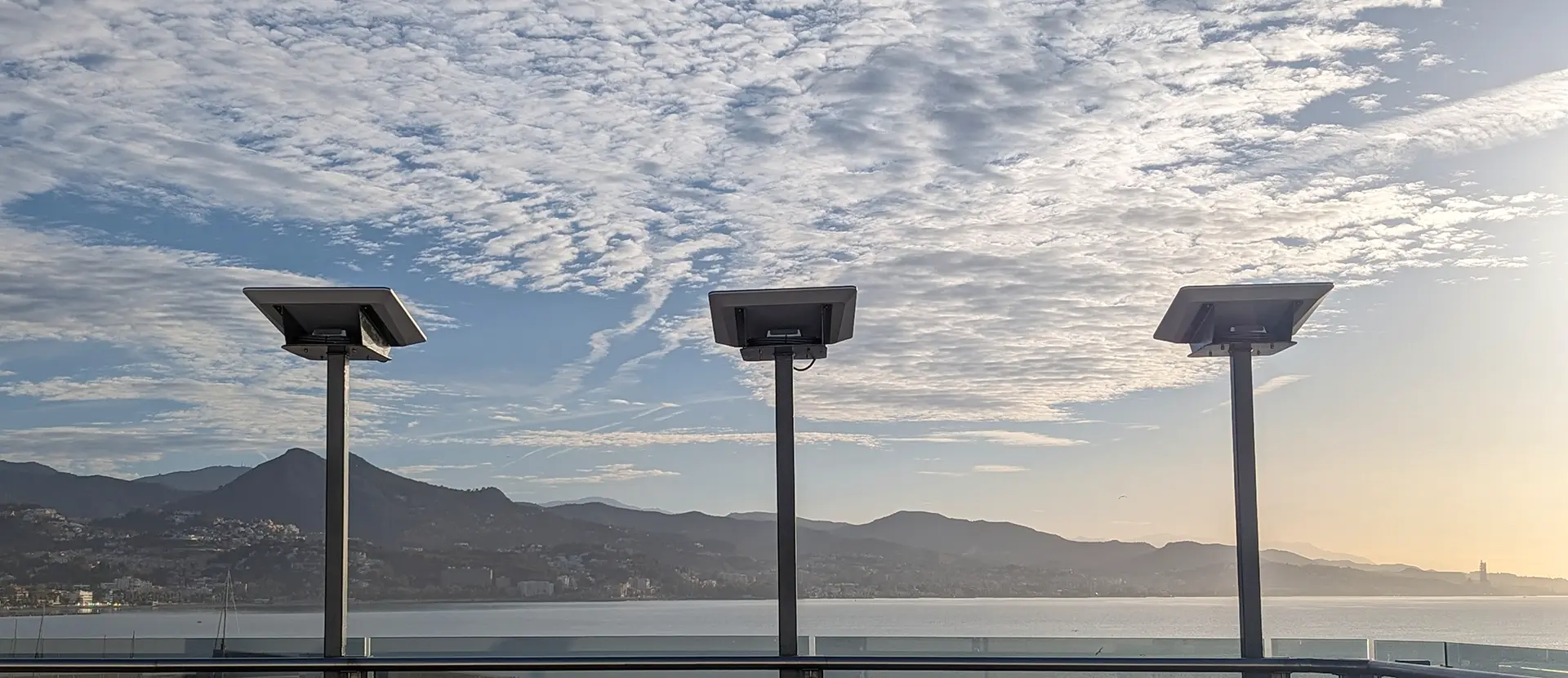


|
||
|
||

I recently used Starlink on a cruise along the coast of Northwest Africa, and I’ll summarize my experience below, but first let me explain why I put some in the title of this post. I posted the following request on the Reddit Cruise group: “What has been your experience of Starlink Internet service on Seabourn or other cruise lines? How was latency? Do video chats work smoothly? Games? etc.” Here are some of the replies:
My experience was positive. I was on the Seabourn Venture for a two-week cruise which went as far south as The Gambia in northwest Africa then followed the coast north to the Mediterranean finally stopping in Málaga, Spain. The ship had six Starlink antennas and two geostationary (GEO) satellite antennas. The GEO satellites were used for ship navigation, weather tracking, etc. The crew on the bridge said their work was not affected by Starlink.
Seabourn offers two Internet packages, surfing and streaming. The surfing package is free for passengers and the faster streaming package is free for the crew. Passengers pay about $20 per day for the streaming package. As the name implies, streaming sites like YouTube and Netflix were blocked for surfing accounts.
According to the ship’s Computer Systems Officer (CSO), streaming users always had Starlink access and surfing passengers used the GEO satellites unless there was excess Starlink capacity. He could not say what the criteria for excess capacity were, but their goal is to always keep the streaming customers happy. (Company policy prohibits crew members from playing games).
My Starlink experience was positive. I tested streaming in my cabin by watching four Netflix videos simultaneously on Android and Apple phones, an iPad, and a laptop. The screens were small, and Netflix would have reduced video quality, but it worked smoothly. Video chats using WhatsApp and Zoom also worked well despite latency being consistently over 100 ms unloaded and considerably higher while up and downloading files.
Latency on the ship was much higher than Elon Musk’s stated goal of 20 ms—what are the sources of that latency?
First is the WiFi network configuration and your location within the ship. Demand also varies during the day and between port and sea days. The size of the ship and the provisioned Starlink capacity are also factors that determine latency.
Carnival Corporation owns Seabourn and eight other cruise lines. I was on Carnival’s smallest ship, which has six Starlink terminals and can accommodate up to 264 passengers with a crew of 120. Carnival’s largest ship, the Mardi Gras, can accommodate approximately 6,500 passengers with approximately 1,745 crew members. I wonder how many Starlink terminals the Mardi Gras has and how satisfied the users are. (I got these passenger and crew counts from ChatGPT-4, but it doesn’t know how many terminals the Mardi Gras has).
Since the only ground stations in Africa are in Nigeria, our traffic traversed inter-satellite links for most of the trip. Once on the ground, traffic was tunneled through the Carnival VPN to a public Internet point of presence (POP) in an English-speaking location like London, Sydney, or Miami.
When Starlink was first installed, traffic sometimes went through Hong Kong and users got Chinese replies. The POP location can also affect copyright restrictions. When Max.com became unavailable during the cruise, the CSO explained that they had been switching back and forth between the London and Miami POPs for maintenance purposes and that Max.com was not available in the UK.
This complexity explains the varied results I reported at the start of this post and no doubt Carnival and other cruise lines monitor and tune their networks constantly. If they are doing well they should advertise performance statistics and customer-satisfaction survey results.
Sponsored byDNIB.com

Sponsored byWhoisXML API

Sponsored byIPv4.Global

Sponsored byVerisign

Sponsored byCSC

Sponsored byRadix

Sponsored byVerisign
